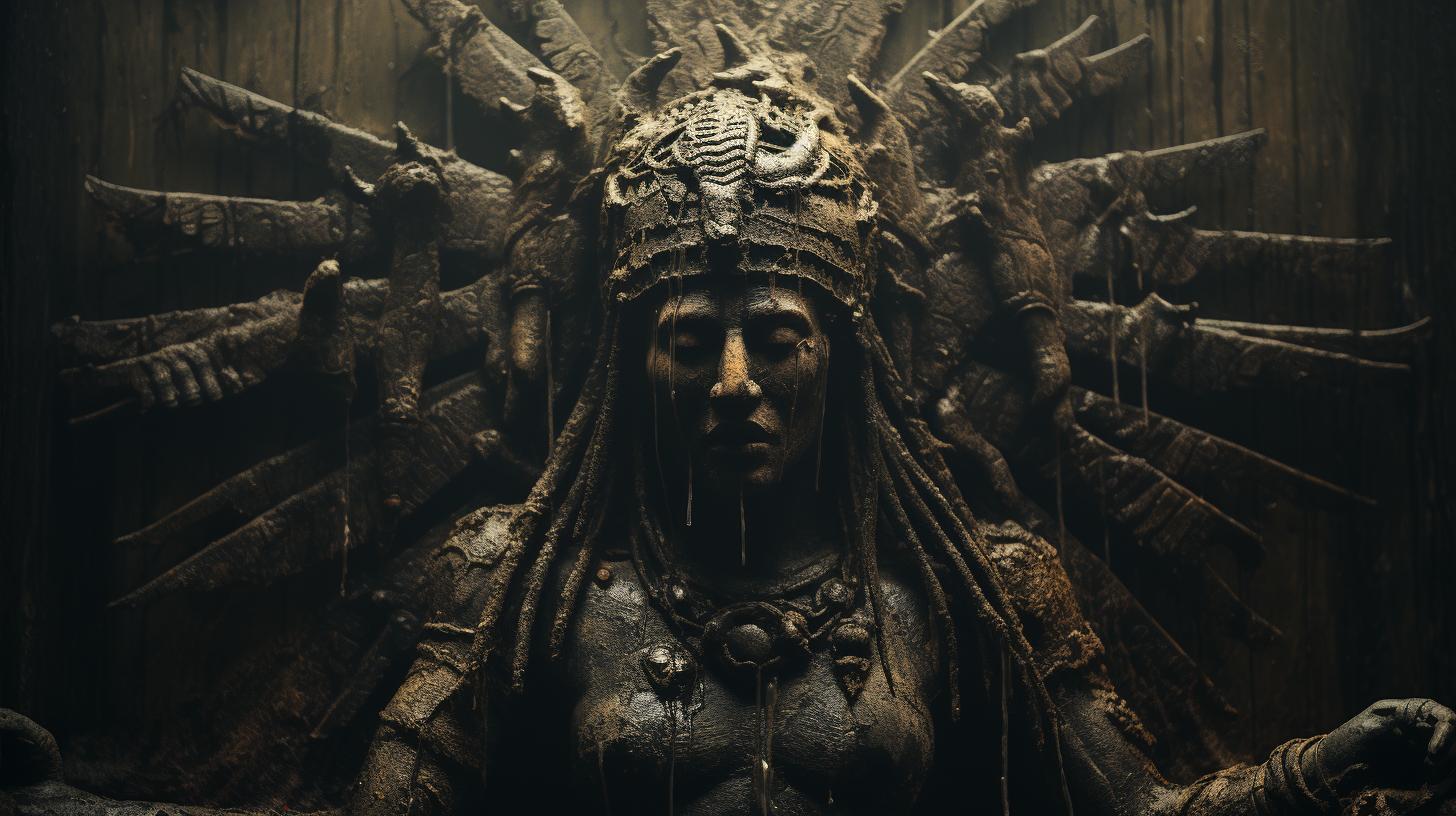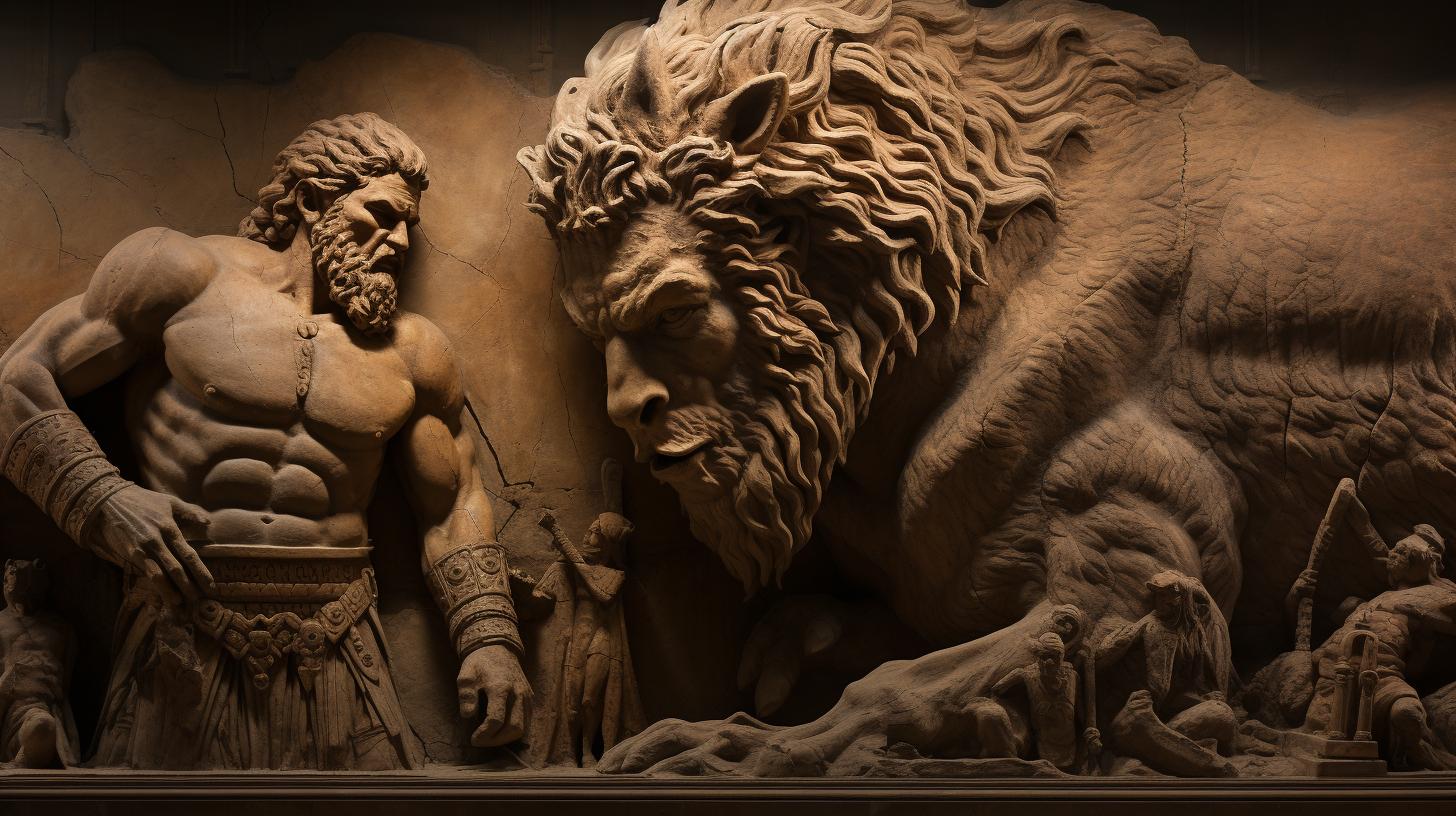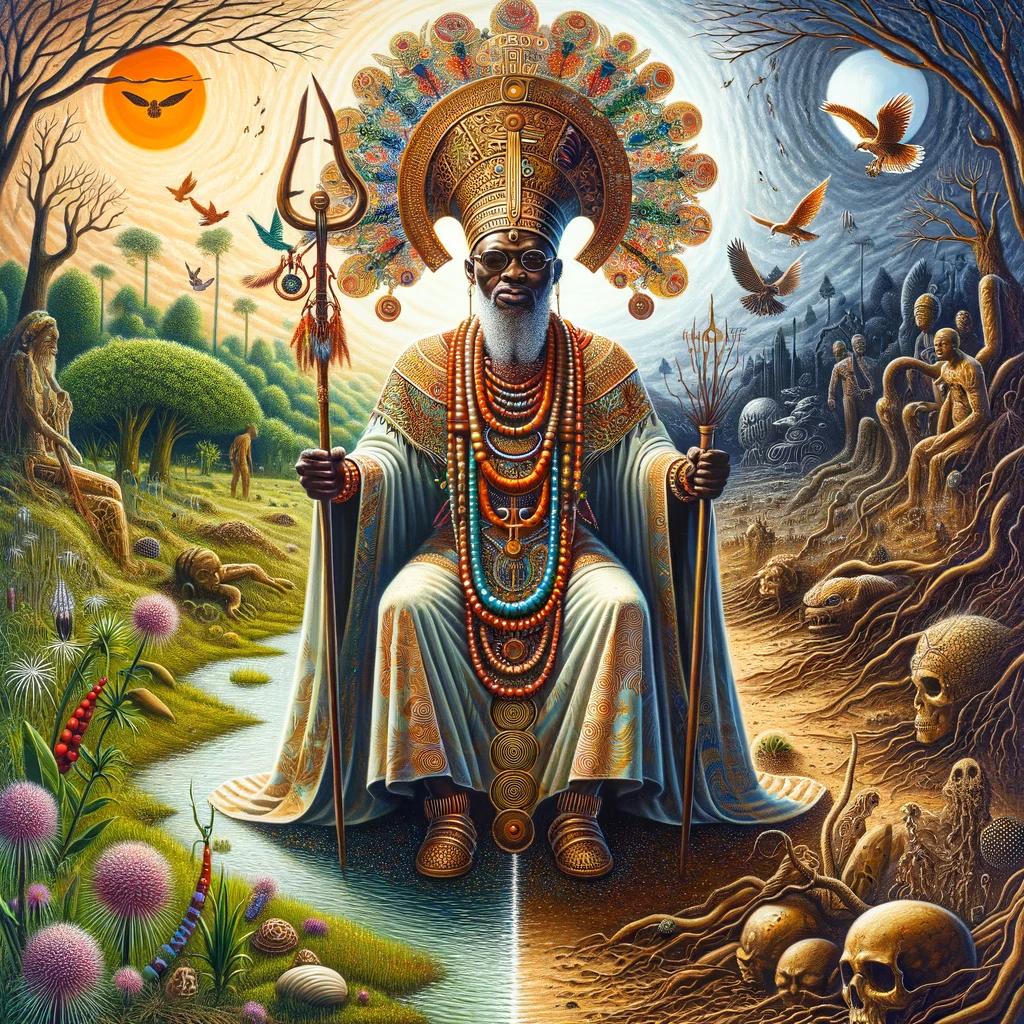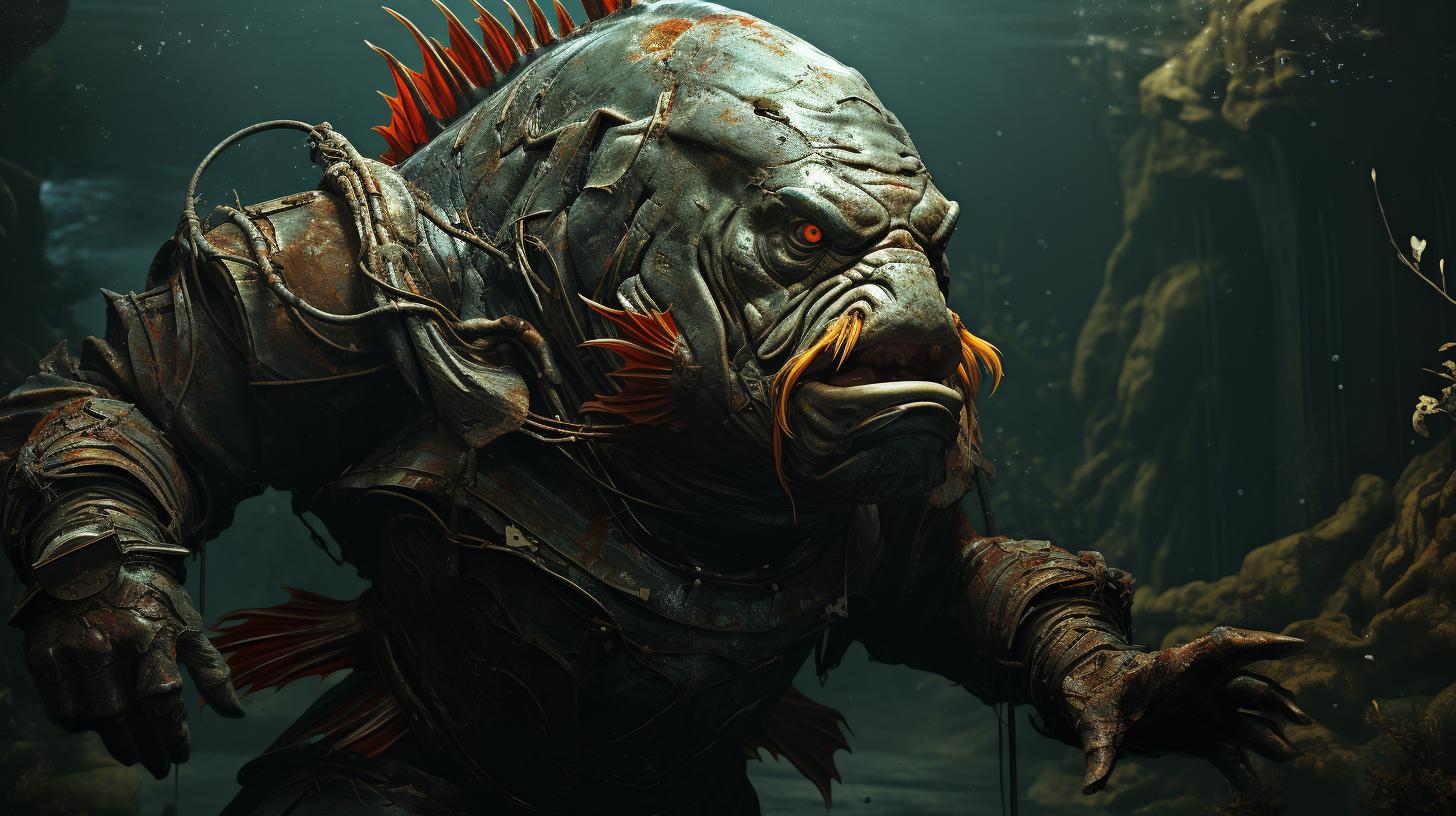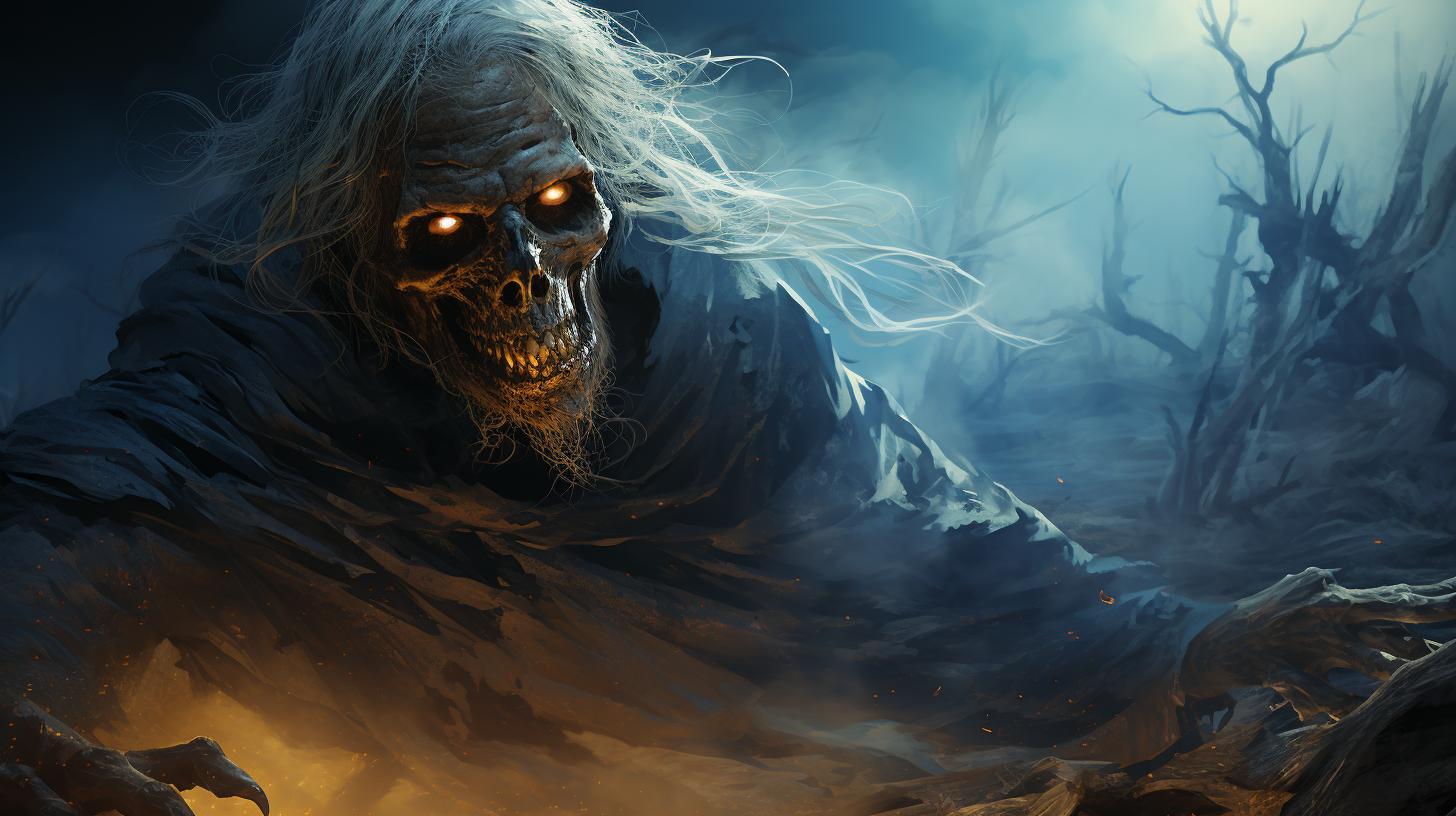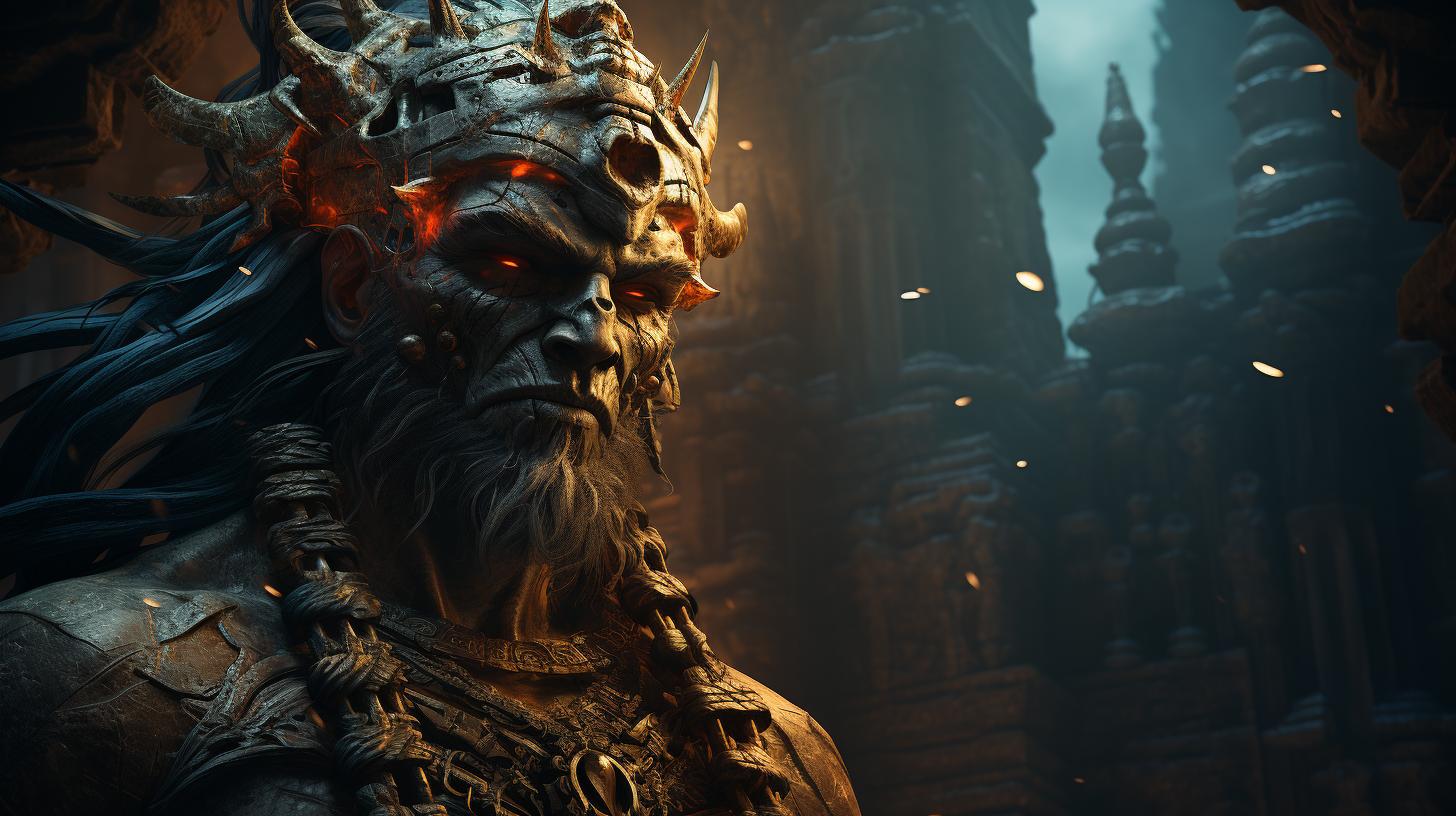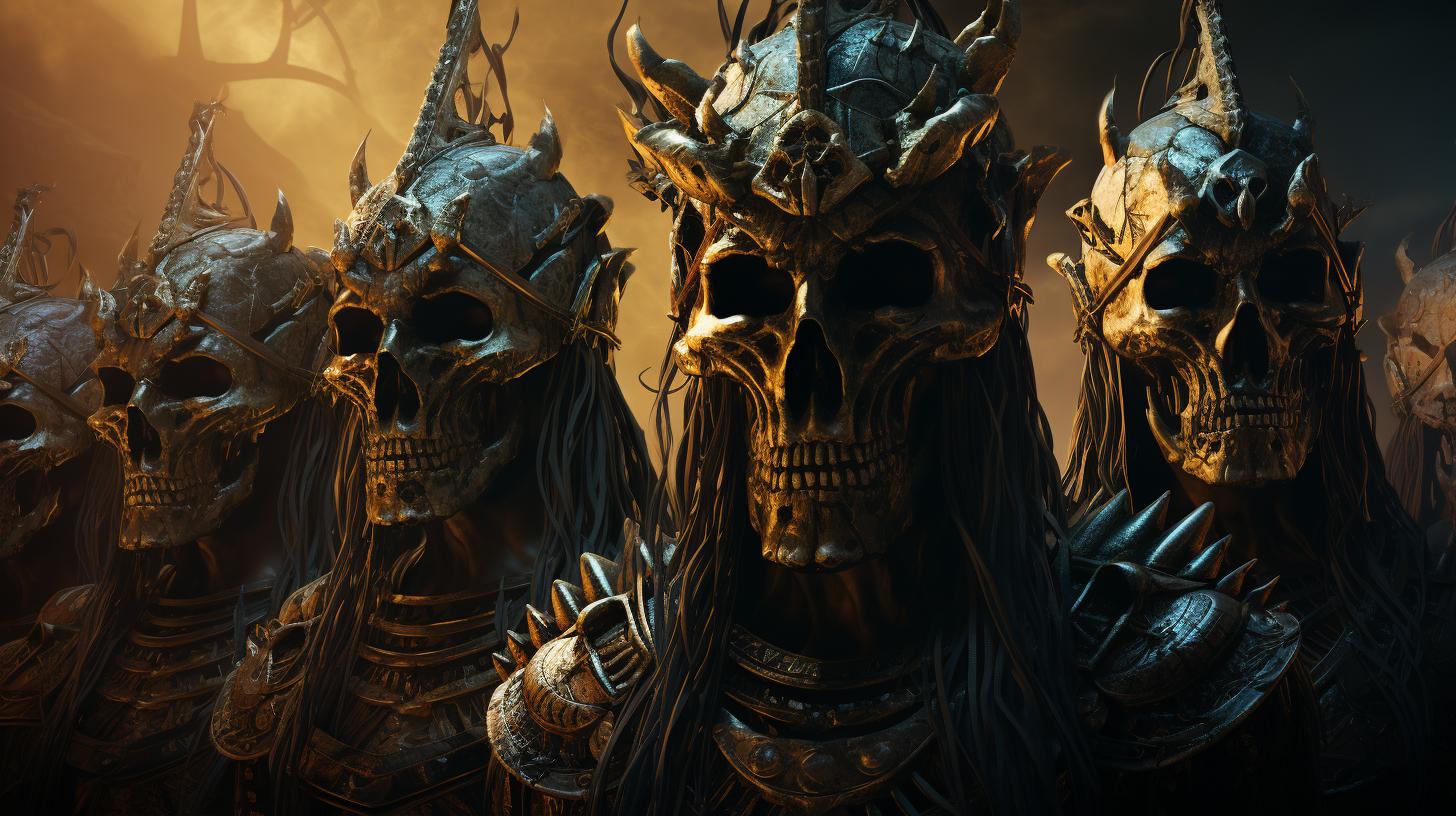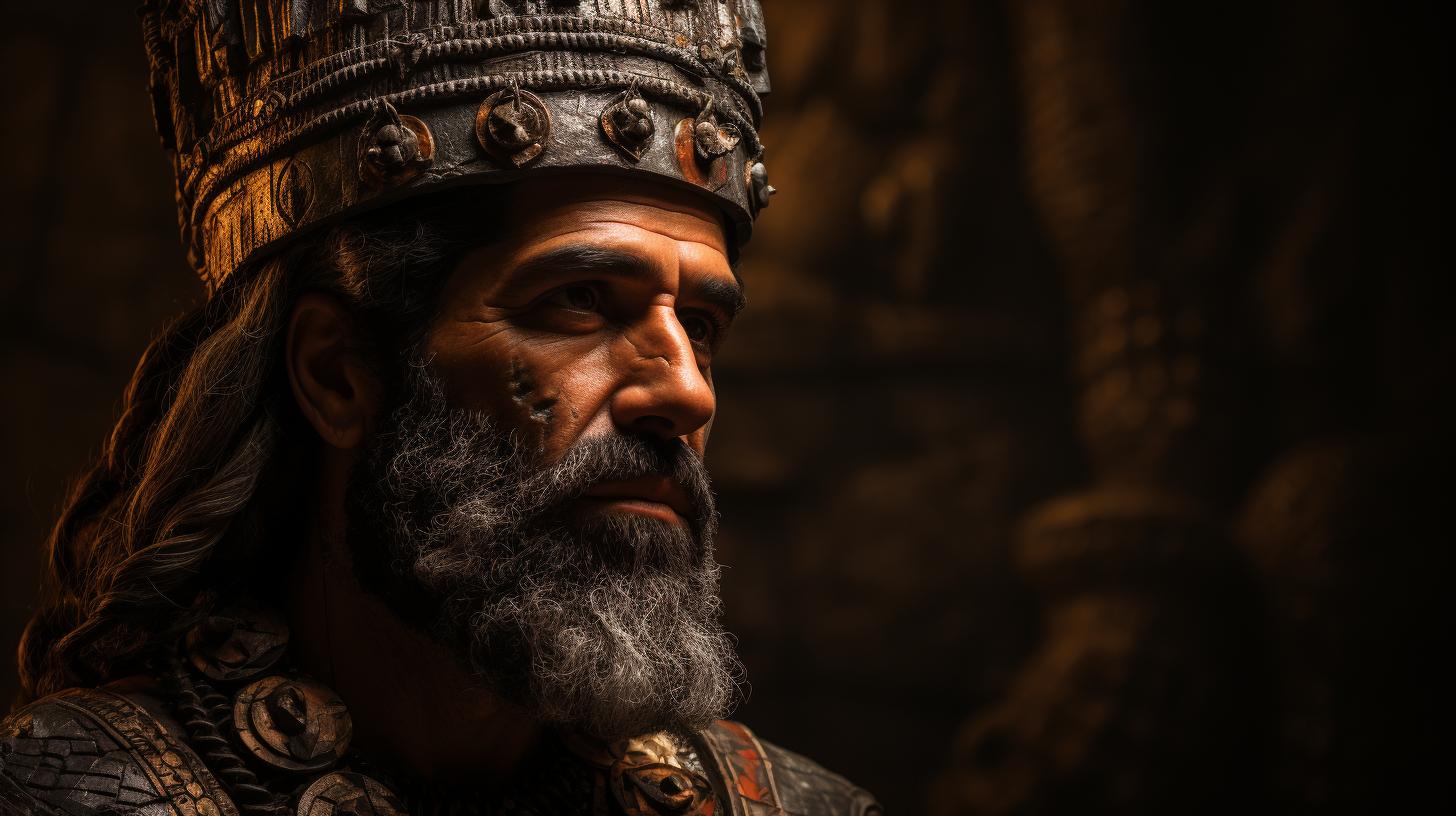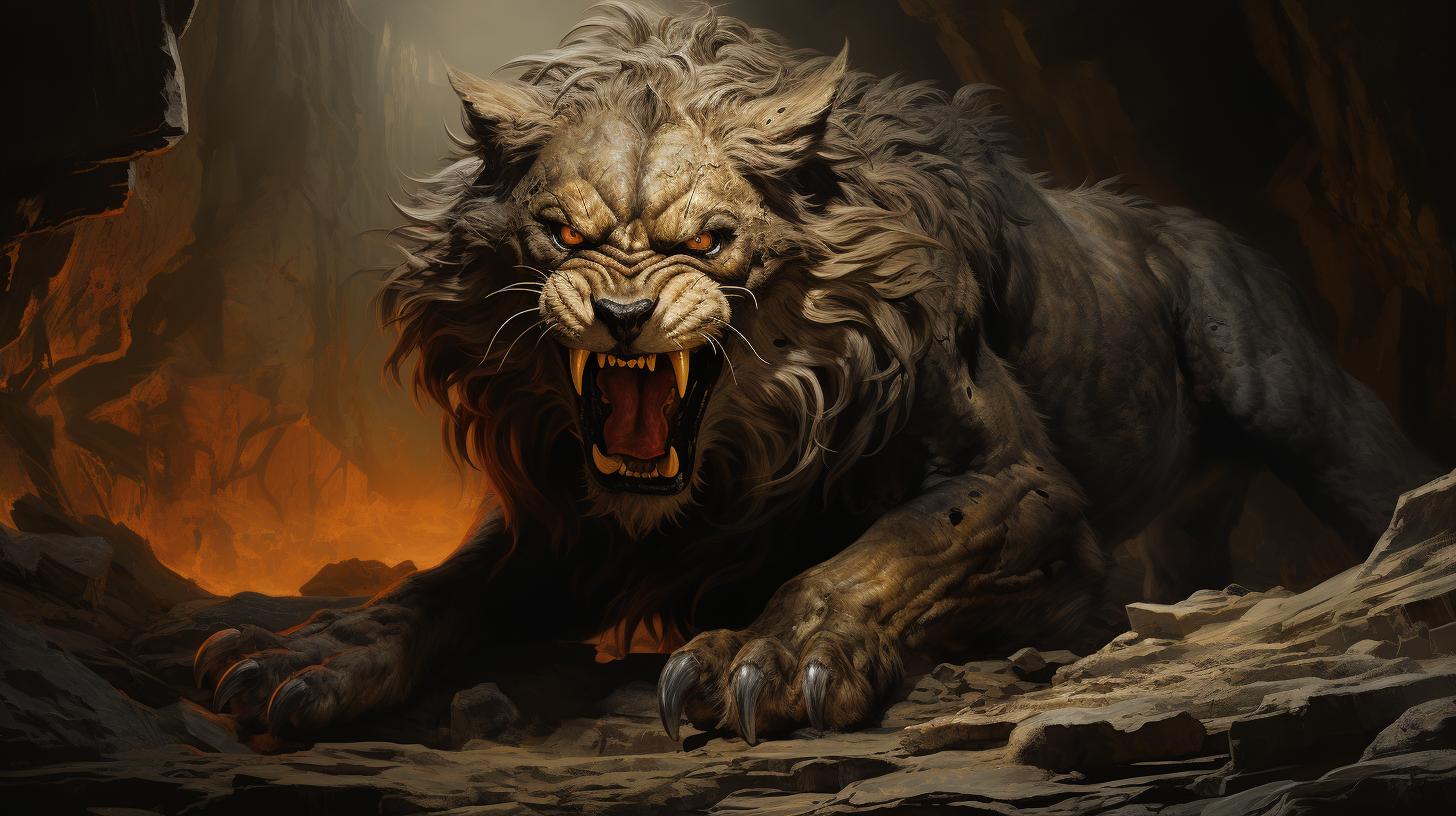The Fascinating World of Utukku: Unraveling Ancient Sumerian and Akkadian Mythology
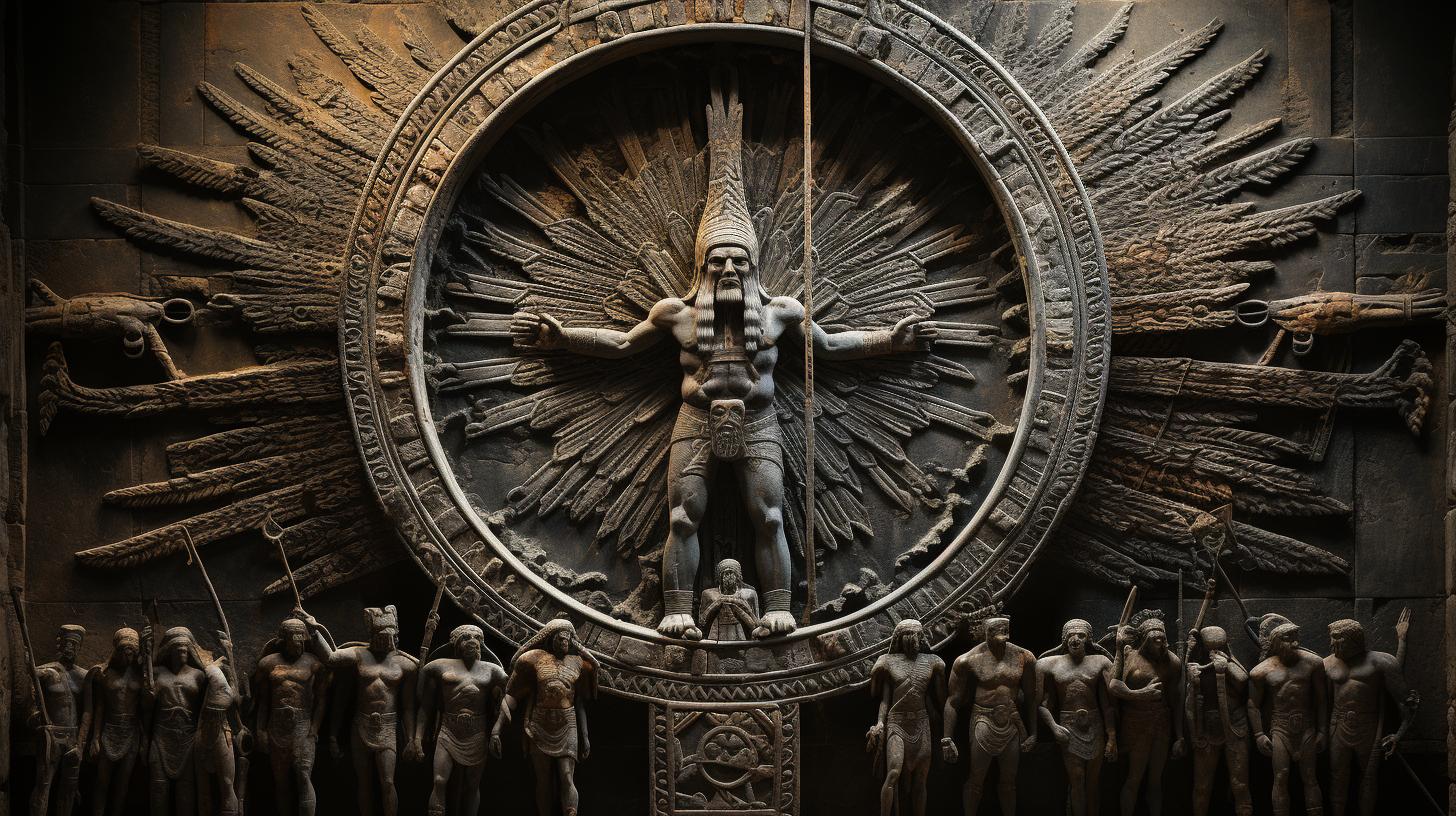
Utukku, prominent figures in Sumerian and Akkadian mythology, were believed to be both benevolent and malevolent entities. These supernatural beings, considered the offspring of Anu and Antu, played a role in the underworld.
Malevolent Utukku, such as Edimmu and Ekimmu, were associated with causing diseases and afflictions in humans. On the other hand, benevolent Utukku, known as shedu, held positive attributes. These complex beings, summoned by individuals with the ability, were believed to interact with both humans and deities.
Exorcism rituals, known as UDUG HUL, were performed to combat the malevolent Utukku.
The Origins of Utukku in Sumerian and Akkadian Mythology
In the rich mythologies of ancient Sumer and Akkad, the origins of Utukku can be traced back to their divine parentage. These enigmatic beings were believed to be the offspring of Anu, the god of the heavens, and Antu, a goddess whose significance varied across different myths.
Utukku were viewed as supernatural entities closely associated with the underworld, carrying out tasks and fulfilling roles within its dominion. Their existence within the mythological framework showcased their intriguing nature.
As children of Anu and Antu, their divine heritage bestowed upon them a mystique that made them both feared and revered.
The intriguing duality of Utukku to exhibit both good and evil qualities added to the complexity of their origins. This duality is reflected in the alternate names associated with them: the malevolent Edimmu and Ekimmu, and the benevolent shedu.
Throughout the mythological narratives, Utukku occupied a unique place, representing a bridge between the mortal realm and the divine. Their origins, intertwined with the celestial ancestry of Anu and Antu, further fueled the fascination surrounding these enigmatic beings.
The beliefs and significance attributed to Utukku in Sumerian and Akkadian mythology form a foundational understanding of their role in the ancient Mesopotamian world. Exploring their origins allows us to delve deeper into the complex tapestry of this intriguing mythological tradition.
The Nature of Utukku: Good and Evil Entities
Utukku, the mythical beings from Sumerian and Akkadian mythology, embody a duality of nature, encompassing both good and evil traits. These fascinating entities are believed to be the offspring of Anu and Antu, positioned in the service of the underworld.
While some Utukku are malevolent, such as the Edimmu and Ekimmu, others are known as shedu and are considered to be benevolent.
The malevolent Utukku display a range of malefic actions, capable of causing diseases and afflictions in humans.
These sinister beings were attributed with covering individuals like garments or binding their bodies, while the Lammea and Lamme demons were also believed to inflict illness upon people.
It was believed that the malevolent Utukku could enter a person’s body, causing harm and suffering.
They were said to introduce poison and curses into the bodies of the afflicted. Furthermore, the presence of mischievous spirits and wicked machinations were believed to result in disease and pain.
To confront and combat the malevolent Utukku, an exorcism canon called UDUG HUL was developed, consisting of sixteen tablets. These rituals served the purpose of protecting and purifying the bodies of those affected by these malefic beings.
Conversely, the benevolent Utukku, like Humbaba, Kingu Kishar, Mamitu Siris, and Zu, were associated with positive attributes and roles. These benevolent beings exemplify the diverse nature of the Utukku.
Utukku were regarded as subterranean spirits who obeyed the commands of Anu, the god of the heavens. Revered individuals possessed the power to summon them, and it was believed that they could interact with both humans and deities.
While Utukku have a significant presence in Sumerian and Akkadian mythology, they are also likened to other mythological and supernatural figures from different cultures. The Utukku shares resemblances with the Hindu Preta and the Chinese Jiangshi, showcasing the interconnectedness of mythologies across different civilizations.
In summary, Utukku are mythical beings steeped in the lore of ancient Sumerian and Akkadian culture. They embody both benevolent and malevolent characteristics, with malefic Utukku being associated with diseases and afflictions.
The presence of rituals and incantations highlights the importance placed on countering their malevolence. Meanwhile, benevolent Utukku showcase positive attributes and act as protectors. Utukku are an integral part of the complex belief systems and mythologies that encompass the history, religion, and culture of ancient civilizations.
Exploring the Malevolent Utukku: Edimmu and Ekimmu
Within the realm of Sumerian and Akkadian mythology, the Utukku encompassed a variety of spirits, some of which were malevolent in nature. Two notable examples of these malevolent Utukku were the Edimmu and Ekimmu. These entities were believed to possess the power to inflict diseases and afflictions upon humans.
The Edimmu, in particular, were often associated with causing illnesses and bringing misfortune to individuals. They were believed to have the ability to enter the bodies of the sick, filling them with venom and malevolent curses.
These sinister entities were known to engage in wicked machinations that resulted in bodily harm and suffering.
Similarly, the Ekimmu were feared for their malicious actions. Legends depicted them as beings capable of covering individuals like garments or binding their bodies with invisible forces.
These malevolent spirits were believed to bring about various afflictions, adding to the hardships and struggles faced by humans.
The existence of these malevolent Utukku served as a chilling reminder of the dangers lurking within the spiritual realm.
Their ability to unleash disease and inflict suffering upon the human body was a source of great fear and concern.
The ancient societies of Sumer and Akkad acknowledged the threat posed by these malevolent Utukku.
To counter their malefic influence, intricate rituals called UDUG HUL were performed. Such rituals were aimed at protecting and purifying those who had fallen victim to the malevolent Utukku, offering a glimmer of hope in the face of their destructive powers.
Shedding Light on Benevolent Utukku: Shedu and Other Positive Beings
In the fascinating realm of Utukku, not all entities were malevolent. Among them were the benevolent Utukku, known as shedu, and other positive beings that played important roles in ancient Sumerian and Akkadian mythology.
The shedu were revered for their protective nature and were often depicted as powerful, winged creatures with the body of a lion or bull. These noble beings were believed to guard and watch over humans, acting as guardians and defenders against evil forces.
- Shedu boasted great strength and courage, making them formidable protectors of cities and temples.
- In addition to their protective roles, shedu were associated with bringing blessings and prosperity to those who revered and honored them.
- They were believed to possess the ability to ward off malevolent spirits and shield individuals from harm.
- Shedu were also associated with the king, symbolizing royal power and divine protection.
- These benevolent Utukku played a crucial part in establishing order and maintaining balance in the ancient Mesopotamian society.
Beyond the shedu, other Utukku figures existed in the realm of benevolence.
Humbaba, Kingu Kishar, Mamitu Siris, and Zu were among the positive Utukku associated with various attributes and roles.
Although the malevolent Utukku often captured attention with their dark deeds, it is essential not to overlook the significance of the benevolent Utukku, such as the noble shedu.
Their protective nature and positive influence played a vital role in the ancient Mesopotamian belief system, shaping the mythology and cultural fabric of that fascinating era.
The Powers and Abilities of Utukku: Disease, Curses, and Manipulations
Utukku, the mythical beings of Sumerian and Akkadian lore, possessed distinctive powers and abilities that influenced human lives in both malevolent and benevolent ways.
These malevolent Utukku, such as Edimmu and Ekimmu, were notorious for their ability to cause diseases and afflictions in humans. They were believed to have the power to infuse venom and curse their victims, leading to physical and mental suffering.
Some accounts even suggested that these malicious entities could envelop individuals like garments, or bind their bodies, adding to their torment.
Additionally, other demonic figures such as Lammea and Lamme were associated with the malevolent Utukku, further compounding the illnesses and pain inflicted upon people.
On the other hand, there were benevolent Utukku, specifically known as shedu, who played a positive role in the lives of humans. These entities offered protection and assistance, counteracting the negative influence of their malevolent counterparts.
They possessed attributes and abilities that safeguarded individuals from harm and aided in various aspects of life.
Utukku, both malevolent and benevolent, were believed to have the power to enter the bodies of humans, exerting their influence and causing afflictions.
Some accounts described their ability to manipulate individuals with malevolent intentions, using their supernatural abilities to spread disease and pain.
The presence of these Utukku, whether malevolent or benevolent, added a layer of mysticism and danger to the ancient Mesopotamian world.
They were viewed as powerful entities capable of directly affecting the well-being of human beings, with diseases and curses being attributed to their actions.
In the next section, we will explore the role of Utukku in Mesopotamian society and religion, shedding further light on the intricate beliefs and practices surrounding these mythological beings.
The Role of Utukku in Mesopotamian Society and Religion
The Utukku held a significant role in Mesopotamian society and religion, their presence intertwining with various aspects of daily life and spiritual beliefs. As both benevolent and malevolent entities, Utukku were believed to have the power to influence the lives of humans and interact with deities.
In Mesopotamian society, the malevolent Utukku were feared for their ability to cause diseases and afflictions in humans. They were seen as malefic beings that could enter the body of individuals, introducing poison and curses that inflicted suffering and ailments.
This belief led to the development of rituals and practices aimed at protecting and purifying the affected individuals.
However, not all Utukku were associated with negativity. The benevolent Utukku, such as the shedu, played a positive role as protectors and guardians.
Seen as divine creatures, they were believed to offer blessings and support to those who sought their assistance.
Utukku’s influence extended beyond the realm of humans. They were considered intermediaries between humans and deities, capable of carrying messages and fulfilling the desires of both mortals and gods.
Utukku were often invoked and summoned by individuals with special abilities who had the power to communicate with the spiritual realm.
Within the religious context, Utukku were believed to be under the command of Anu, the god of the heavens.
Their presence in rituals and ceremonies was crucial, as they were thought to facilitate communication between worshippers and gods. Utukku were seen as important figures in maintaining the balance between the mortal world and the divine.
The role of Utukku in Mesopotamian society and religion highlights the complex and intricate belief system of the ancient civilizations. Their existence encompassed both the potential for harm and the capacity to provide protection and assistance.
Utukku were revered and feared, demonstrating the significant influence they held in the lives and spiritual practices of the people of Mesopotamia.
Summoning and Interactions with Utukku: Humans and Deities
The summoning and interactions with Utukku played a significant role in Mesopotamian beliefs and practices. Utukku, as supernatural beings, were believed to be subservient to the gods, particularly Anu, the god of the heavens.
Those who possessed the power to summon them could engage in communication and seek assistance or guidance.
The summoning of Utukku involved intricate rituals and incantations, often performed by knowledgeable priests or individuals well-versed in the ancient texts.
These rituals served as a means to establish a connection and invite the presence of the Utukku into the human realm. It was a delicate process that required precise recitation of specific prayers and invocations.
Once summoned, Utukku were thought to interact with both humans and deities. They acted as intermediaries, carrying messages or fulfilling requests on behalf of those who summoned them. Utukku were seen as potent entities capable of influencing events and outcomes in the earthly realm.
In their interactions with humans, Utukku were believed to possess knowledge and wisdom beyond human comprehension. They were sought after for their ability to provide insights, guidance, and even protection. Utukku were considered conduits for spiritual energy and were thought to bridge the gap between the mortal world and the divine.
Furthermore, Utukku were believed to have direct interactions with deities. They could communicate with and receive instructions from the gods, acting as messengers or emissaries between the human and divine realms.
This connectivity highlighted the integral role Utukku played in ancient religious practices and the intricate cosmology of Mesopotamian cultures.
The relationships between humans, deities, and Utukku were complex and multifaceted, encompassing aspects of spirituality, magic, and divine intervention.
They formed an essential part of the intricate belief systems of ancient Mesopotamia, where interactions with supernatural entities were seen as integral components of daily life.
The UDUG HUL Incantations: Rituals to Counter the Malevolent Utukku
In order to combat the malevolent Utukku and protect individuals from their harm, ancient Mesopotamian cultures developed a series of powerful exorcism rituals known as the UDUG HUL incantations.
These rituals were performed by trained priests or priestesses who possessed a deep understanding of the spiritual realm and the intricacies of dealing with malevolent entities.
The UDUG HUL incantations consisted of sixteen tablets, each containing specific formulaic prayers, invocations, spells, and actions to counteract the influence of the malevolent Utukku. These tablets were carefully crafted and encoded with the knowledge of generations, serving as a guide for the priests during the rituals.
During the rituals, the priests would recite the incantations and perform gestures and symbolic actions to address the malevolent Utukku directly. The incantations were believed to have the power to bind the Utukku, break their hold on the afflicted, and expel them from the human body or the affected space.
It is important to note that the UDUG HUL incantations were not merely recitations of words, but powerful rituals that involved the manipulation of spiritual forces. The priests would often use sacred objects, such as amulets or figurines, as focal points for their actions, imbuing them with protective and purifying energies to aid in the exorcism process.
The rituals also included offerings and sacrifices to appease the gods and gain their favor in the battle against the malevolent Utukku. These offerings varied depending on the specific Utukku involved, and the priests would carefully follow the prescribed rituals to ensure their efficacy.
The UDUG HUL incantations were not only performed reactively to deal with the immediate effects of the malevolent Utukku but were also used preventively as a means to ward off potential afflictions.
They were considered a vital aspect of ancient Mesopotamian spiritual practices, offering protection and purification from the malevolent forces that could disrupt the balance of life.
While the specific details and techniques of the UDUG HUL incantations have been lost to time, their importance and influence can still be seen in the surviving texts and artifacts from ancient Mesopotamia.
These rituals provide valuable insights into the complex belief system and practices of the people of that era, highlighting their constant struggle against the malevolent Utukku and their dedication to maintaining harmony and well-being.
Comparisons with Other Folklore Figures: Hindu Preta and Chinese Jiangshi
In addition to their presence in Sumerian and Akkadian mythology, Utukku also draw similarities to other folklore figures from different cultures. One such parallel can be seen in Hindu mythology with the creature known as Preta.
Preta, much like the malevolent Utukku, is depicted as a hungry and tormented spirit that wanders the earth, seeking sustenance and often causing harm to the living.
Similarly, the Chinese folklore features a creature known as Jiangshi, which shares similarities with the Utukku.
Jiangshi is a type of vampire believed to be reanimated corpses. These malevolent beings hop around with their arms stretched out, sucking the life force from the living. They are often associated with death and decay, much like the malevolent Utukku and their ability to cause disease and suffering.
While the specific characteristics and cultural contexts of these folklore figures may differ, the underlying themes of malevolence, affliction, and supernatural power align with the malevolent Utukku. These comparisons highlight the universal human fascination with supernatural entities that possess both good and evil qualities, transcending geographical boundaries and cultural differences.
Utukku in Popular Culture: Influence on Pathfinder and Other Media
The ancient mythological beings known as Utukku have left a lasting impact on popular culture, particularly in the realm of fantasy and role-playing games. One notable example is the influential tabletop game Pathfinder, where Utukku creatures and their lore have been incorporated into the game’s rich tapestry of creatures and settings.
In Pathfinder, players have the opportunity to encounter and interact with Utukku, both as adversaries and allies. Game masters have the flexibility to incorporate Utukku into their campaigns, weaving intricate storylines and quests centered around these enigmatic beings.
Whether players face malevolent Utukku entities, such as Edimmu and Ekimmu, or encounter benevolent Utukku like the protective Shedu, the presence of these mythological creatures adds depth and intrigue to the game.
Utukku’s influence extends beyond Pathfinder and can be seen in various forms of media. Books, movies, and television shows draw inspiration from the ancient Mesopotamian mythology, infusing their narratives with the concepts and attributes associated with Utukku.
Whether invoked as malevolent forces that haunt the living or revered as guardians and harbingers of wisdom, Utukku captivate audiences with their supernatural abilities and ambiguous nature.
Moreover, Utukku’s influence can be observed in video games, where developers often incorporate these mythological beings into their virtual worlds.
Games like “Assassin’s Creed” and “God of War” feature encounters with Utukku-like creatures, showcasing their abilities to cause afflictions, manipulate, and impact the game’s storyline. These representations help bring ancient legends to life and give players a glimpse into the fascinating world of Utukku.
Utukku’s enduring presence in popular culture is a testament to the lasting impact of ancient mythologies. From the pages of role-playing games to the screens of movies and video games, Utukku continue to fascinate and inspire, allowing audiences to immerse themselves in the rich tapestry of ancient Mesopotamian beliefs and folklore even in the modern era.
The Legacy of Utukku in Mesopotamian Mythology and Historical Context
The legacy of Utukku in Mesopotamian mythology holds significant importance in understanding the cultural and historical context of the ancient civilizations of Sumer and Akkad. These mythical beings, known for their complex nature and dual qualities of good and evil, played a crucial role in shaping the belief systems of the time.
Utukku, being considered the offspring of Anu and Antu, held a unique position in the pantheon of deities and spirits. Their existence and actions were intertwined with the human experience, especially in relation to health and afflictions.
These malevolent and benevolent Utukku were believed to have direct influence over human lives, capable of causing diseases, curses, and manipulating bodies. The rituals and exorcisms performed to counter the malevolent Utukku demonstrate the fears and concerns of the ancient Mesopotamians about their well-being and the need for protection.
However, it is essential to note that not all Utukku were evil. The benevolent Utukku, such as shedu, represented positive attributes and were revered as protective entities. They were associated with various deities and fulfilled roles that helped humans in different aspects of life.
The legacy of Utukku extends beyond Mesopotamian mythology. These figures are comparable to the Hindu Preta and the Chinese Jiangshi, showcasing the common human fascination and exploration of supernatural beings in different cultures.
The enduring influence of Utukku can also be seen in popular culture, with these ancient figures finding their way into modern media and entertainment. Games like Pathfinder and other forms of storytelling continue to draw inspiration from the rich lore of Utukku in Mesopotamian mythology.
Understanding the legacy of Utukku provides valuable insights into the religious, social, and historical aspects of ancient Mesopotamian civilization. It sheds light on the beliefs, fears, and aspirations of the people who once worshiped and interacted with these mythical beings.
.











